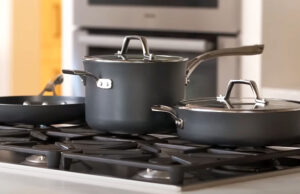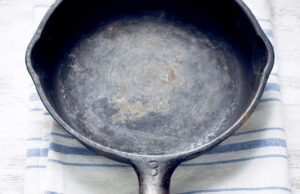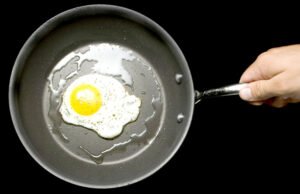As an Amazon Associate, I earn from qualifying purchases at no extra cost to you.
How to Fix Dishwasher Door Spring: Fast and Easy Without Stress
The dishwasher door just fell again. You grab it, curse under your breath, and wonder why this always happens at the worst time. Maybe dinner is almost ready, and you are already late. The spring that holds the door seems impossible to fix, right? Well, breathe. In this article, we will walk through exactly how to fix a dishwasher door spring, step by step, without confusing jargon. By the end, your dishwasher door will open and close smoothly like it used to.
Inspect the Dishwasher Door Carefully
The first thing you need to do is look closely at the door and the spring. Open the door slowly and see if the spring is loose, stretched, or broken. Sometimes, the problem is obvious, like a snapped spring. Other times, the spring may just be weak and needs a little adjustment. Make sure to check both sides of the door because many dishwashers have two springs that work together.
Look for anything unusual around the hinges too. Dirt or rust can block the spring from working properly. You can use a flashlight to see inside the hinge area. Also, gently wiggle the door. If it moves too easily, the spring is not holding the weight. Be careful not to force it.
Take note of the spring type and length if it needs replacement. Writing it down or taking a photo helps you remember when you go to buy a new one. This small step can save you a lot of time later. You want to be confident about what you are fixing before touching anything.
- Check both sides of the door for springs.
- Look for rust, dirt, or damage around hinges.
- Wiggle the door to see if spring is weak.
- Note spring type and length for replacement.
Remove the Old Spring Safely
Before touching the spring, unplug the dishwasher. Safety first. Next, carefully pull the door slightly open to relieve tension. Many springs are under pressure and can snap back if released suddenly. Use a small screwdriver or pliers to detach the spring from the hinge and the door. Work slowly and do not force it.
Some dishwashers have clips or brackets holding the spring. Identify these first. Loosen them gently before trying to pull the spring out. If the spring seems stuck, a little wiggle usually works better than pulling hard. Keep your fingers clear of any snapping points.
Once removed, check the old spring carefully. If it is stretched, rusted, or broken, you know exactly what went wrong. You can compare it with a new spring to ensure it is the correct replacement. Always keep the old spring until you are sure the new one works perfectly.
- Unplug dishwasher before starting.
- Open door slightly to release tension.
- Loosen clips or brackets carefully.
- Check old spring for damage before replacement.
Choose the Right Replacement Spring
Picking the correct spring is very important. Look at the old spring’s size, length, and strength. Many hardware stores have universal dishwasher springs, but matching your exact model is safest. Using the wrong spring can make the door too tight or too loose.
Read the part numbers if available. The dishwasher manual may also list replacement parts. If you cannot find the exact number, a store employee or online guide can help. Make sure the spring is strong enough to hold the door weight.
Check the material of the spring too. Metal springs last longer than thin wire ones. Rust-resistant coatings are a bonus. You do not want to replace it again in a few months. This small extra attention prevents repeated problems.
- Match the spring size and length.
- Check part numbers or manual for exact type.
- Ensure spring strength fits door weight.
- Prefer rust-resistant materials for durability.

Install the Spring Correctly
Now it’s time to attach the new spring. Hook one end to the hinge first, then slowly stretch it toward the door. Many people make the mistake of forcing it, which can bend the spring or break clips. Move slowly and keep your fingers safe.
Double-check the hooks and clips before letting go. Make sure the spring sits properly in place. Repeat the same for the other side if your dishwasher has two springs. After both springs are attached, gently open and close the door to test tension. It should move smoothly without effort or jerking.
If the door feels too heavy or too light, adjust the spring slightly. Some springs allow small length adjustments by moving the hook point. Take your time to get it right. A perfectly balanced spring makes dishwasher use easy and safe.
- Attach one end of the spring to the hinge.
- Stretch slowly toward the door hook.
- Check hooks and clips are secure.
- Adjust tension if door feels too heavy or light.
Test the Door Movement
After installation, testing is key. Open and close the door slowly several times. It should stay in place at any position and return to the closed position easily. Pay attention to smooth movement without jerks. If it feels off, recheck the hooks or tension.
Listen for unusual sounds like squeaks or clicks. These may mean the spring is rubbing against metal or the hinge. A little lubrication with a small drop of machine oil can help. Avoid over-oiling, or it may drip inside the dishwasher.
Try putting light items in the dishwasher to see if the door still moves correctly. Sometimes the door can handle empty weight well but struggle with load. Adjust again if necessary. Testing ensures your repair lasts longer.
- Open and close door slowly.
- Listen for squeaks or rubbing.
- Lubricate lightly if needed.
- Test with light items to check spring support.
Maintain the Spring for Long Life
Even after fixing, maintenance keeps the spring working. Clean the hinge area regularly to prevent dirt and rust. Check the spring for signs of wear once every few months. Early detection avoids sudden breakage.
Lubricate the spring lightly when it starts to squeak or feel stiff. Avoid heavy oil, which can attract dust. Keep an eye on door movement. If it starts to sag, adjust the tension before it gets worse. Small efforts prevent major repairs.
Replacing springs is easier when you maintain them. Some people forget until the door snaps down. Don’t be one of them. Your dishwasher will last longer, and your kitchen life will be smoother with simple care.
- Clean hinge area regularly.
- Check spring for wear every few months.
- Lubricate lightly if stiff or squeaky.
- Adjust tension before problems grow.
Final Thoughts
Fixing a dishwasher door spring is simple if you take it slowly. Look, remove, replace, and test carefully. Choosing the right spring is key. Small maintenance keeps it working longer. In this article, we covered everything beginners need. You can now enjoy a smooth, reliable dishwasher door every day.
| Task | What to Do | Tip | Common Mistake |
|---|---|---|---|
| Inspect Door | Check springs, hinges, rust | Use flashlight | Ignoring both sides |
| Remove Spring | Release tension, unplug first | Use pliers gently | Pulling hard |
| Choose Spring | Match size, strength | Check part numbers | Buying wrong size |
| Install Spring | Hook hinge first, stretch | Move slowly | Forcing spring |
| Test Door | Open and close slowly | Lightly load | Skipping test |
| Maintain Spring | Clean, lubricate, check wear | Monthly check | Ignoring early signs |
Frequently Asked Questions (FAQs)
Is it hard to replace a dishwasher door spring?
Not really. With the right tools and careful attention, it is very manageable. The main concern is tension because springs can snap if mishandled. Taking your time to unplug the dishwasher, open the door slightly, and remove the old spring safely makes it simple. Anyone with basic hand skills can replace it. Watching a quick video or checking the model manual helps too.
Can I use any spring for my dishwasher?
No, using a random spring is risky. The spring needs the correct length and strength to hold the door. If it is too weak, the door will sag. If it is too strong, it might snap hinges. Always check the part number or use a universal dishwasher spring that matches your model. Buying the right spring saves money and effort in the long run.
Do I need professional tools to fix the spring?
Mostly, no. You need simple tools like pliers, screwdriver, and flashlight. Sometimes small wrenches help for clips. Avoid heavy tools; they can damage the spring or hinge. Safety gloves can protect fingers from snapping tension. Basic household tools are enough for a safe repair.
Is it safe to fix the spring myself?
Yes, if you follow safety rules. Always unplug the dishwasher before touching the spring. Open the door slowly and keep fingers clear of snapping points. Avoid rushing and use gentle force. Safety precautions make this DIY repair very safe for anyone.
Can a dishwasher door spring wear out quickly?
Yes, it can. Springs endure daily stress from heavy doors. Rust, dirt, and overloading the dishwasher speed up wear. Regular inspection and light maintenance prevent sudden failure. Quality springs last longer, so choosing the right replacement is important.
Do I need to replace both springs at once?
It’s not always required, but it’s smart. If one spring is worn, the other may fail soon. Replacing both together ensures balanced door tension. It also saves time in the future. Uneven springs can make the door sag or jam.
Is lubrication necessary after installation?
Yes, sometimes. A small drop of machine oil keeps movement smooth and quiet. Avoid over-lubricating because oil can attract dirt or drip inside the dishwasher. Check the spring occasionally for stiffness and apply lightly as needed.
Can I adjust the spring tension myself?
Yes, many springs allow small adjustments by moving the hook point. Loosen or reposition slightly to get the right door balance. Testing after adjustment ensures the door stays open and closes easily. Small tweaks can prevent sagging or jerky movement.




